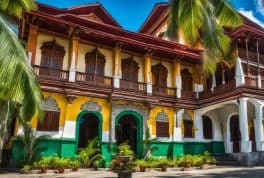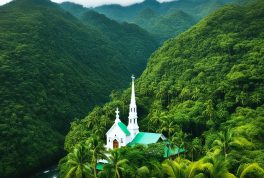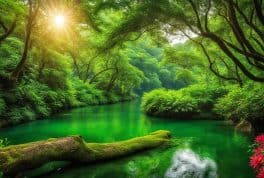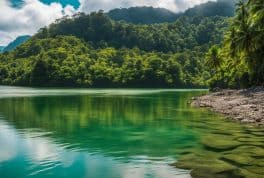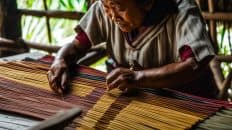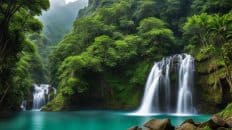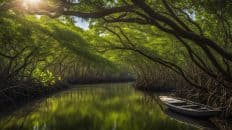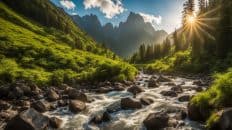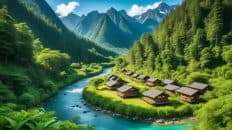Samar Island
Samar, a lush island in the Philippines' Eastern Visayas region, is known for its rich history, diverse landscapes, and vibrant culture. It combines dense forests, rugged terrain, and beautiful beaches, and is celebrated for its unique festivals and resilient spirit. Samar's economy centers around agriculture, fishing, and eco-tourism, attracting visitors with its natural beauty and cultural heritage.
Top 10 Things to see in Samar
- San Juanico Bridge: The longest bridge in the Philippines, offering stunning views of the San Juanico Strait. It's a marvel of engineering and a symbol of connection between Samar and Leyte.
- Sohoton Natural Bridge National Park: Known for its natural stone bridge, caves, and clear waters, perfect for kayaking and spelunking.
- Tarangban Falls: A magnificent and secluded waterfall located in Calbayog, offering a serene and picturesque environment ideal for nature lovers.
- Lulugayan Falls: Often referred to as a mini-Niagara, these falls in Calbiga are surrounded by lush greenery and provide a refreshing retreat.
- Calbiga Caves: One of the largest cave systems in Asia, offering an exciting adventure for spelunkers and explorers.
- Biri Rock Formations: A geological wonder in Northern Samar, these unique formations offer breathtaking views and are a testament to the power of nature.
- Basey Church: A historic church known for its antique religious icons and beautiful architecture, reflecting the Spanish colonial influence.
- Pink Beach on Sila Island: Famous for its pink sand, this beach in Northern Samar is a rare and picturesque destination for beachgoers.
- Balangiga Bells: Located in the town of Balangiga, these historic bells are a significant symbol of Philippine-American War history.
- Langun-Gobingob Caves: One of the largest cave systems in the country, located in Calbiga, offering a unique and thrilling experience for adventurers and cavers.
Guides and Tours
Cities on Samar
- Calbayog City
- Catbalogan City
- Borongan City
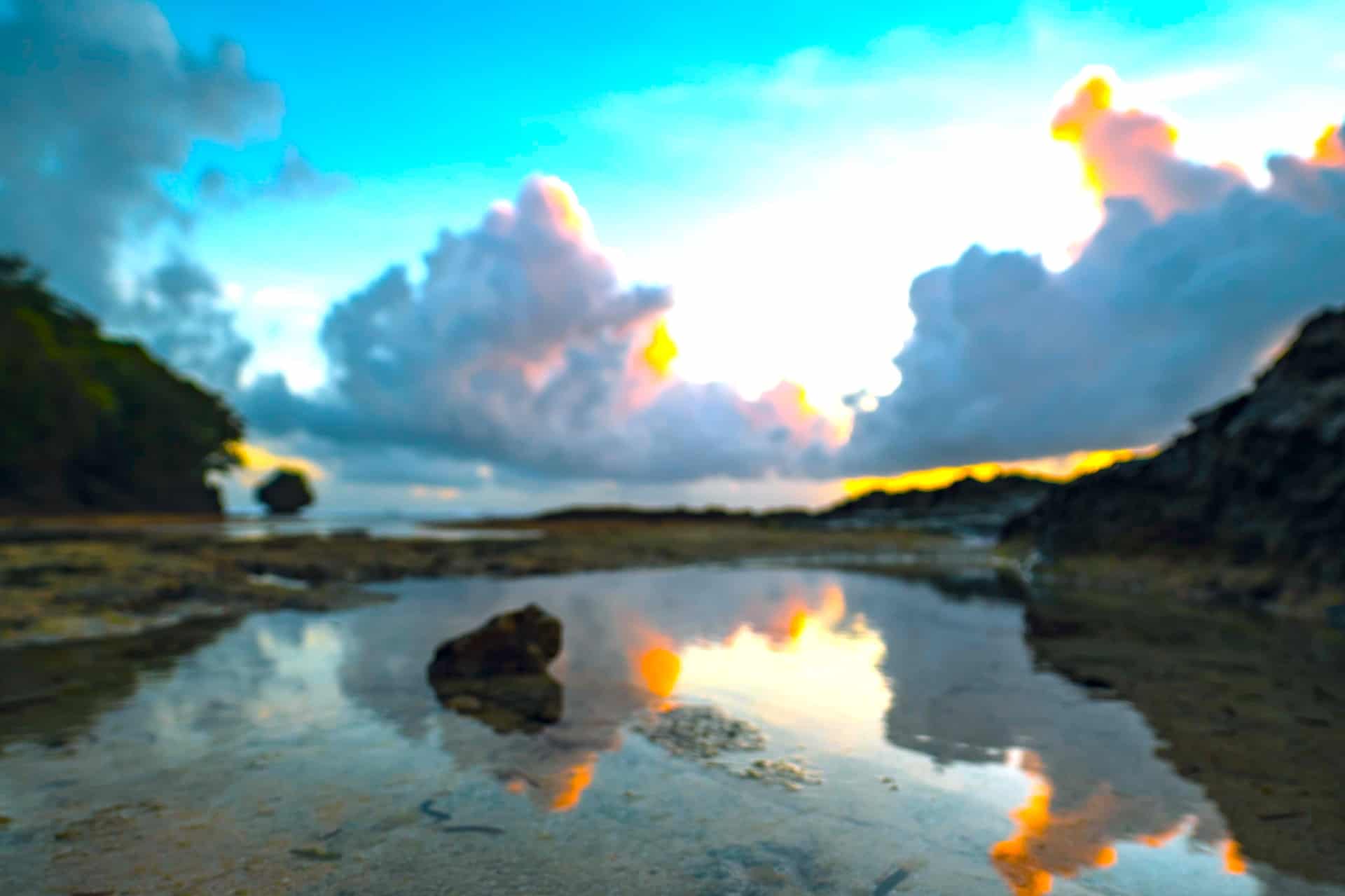
Top 10 Questions and Answers about Samar
- What is Samar known for?
- Samar is known for its stunning natural landscapes, including dense rainforests, majestic waterfalls, and unique cave systems. It's also rich in history and culture, with significant events like the Philippine-American War.
- Where is Samar located?
- Samar is located in the Eastern Visayas region of the Philippines. It's the third-largest island in the country and is divided into three provinces: Northern Samar, Eastern Samar, and Western Samar.
- What are the top tourist attractions in Samar?
- Top attractions include the San Juanico Bridge, Sohoton Natural Bridge National Park, Tarangban Falls, Lulugayan Falls, Calbiga Caves, Biri Rock Formations, Basey Church, Pink Beach on Sila Island, Balangiga Bells, and Langun-Gobingob Caves.
- What is the cultural significance of Samar?
- Samar has a rich cultural heritage influenced by indigenous traditions and Spanish colonial history. It's known for vibrant festivals, traditional crafts, and historical landmarks.
- Can you describe the geography of Samar?
- Samar features a diverse geography with rugged mountains, extensive rainforests, and beautiful coastal areas. Its terrain is a mix of natural wonders, from waterfalls and caves to beaches and rock formations.
- What are some traditional foods from Samar?
- Traditional foods in Samar include local seafood dishes, root crops like taro, and Filipino classics with a local twist. The island is also known for its tuba (coconut wine).
- What is the significance of the San Juanico Bridge?
- The San Juanico Bridge, the longest in the Philippines, connects Samar to the island of Leyte. It's an engineering marvel and symbolizes the connection between the two islands.
- Are there any unique festivals celebrated in Samar?
- Yes, Samar celebrates several unique festivals, such as the Sinulog and Karisyohan Festival in Calbayog City, and the Capul Island Fiesta. These festivals feature colorful parades, cultural dances, and various local traditions.
- What kind of wildlife can be found in Samar?
- Samar's diverse ecosystems are home to various wildlife species, including Philippine eagles, tarsiers, and a variety of endemic birds and marine life.
- How is the climate in Samar?
- Samar has a tropical rainforest climate, with significant rainfall throughout the year. The island experiences a wet season and a relatively dry season, and it's also prone to typhoons.
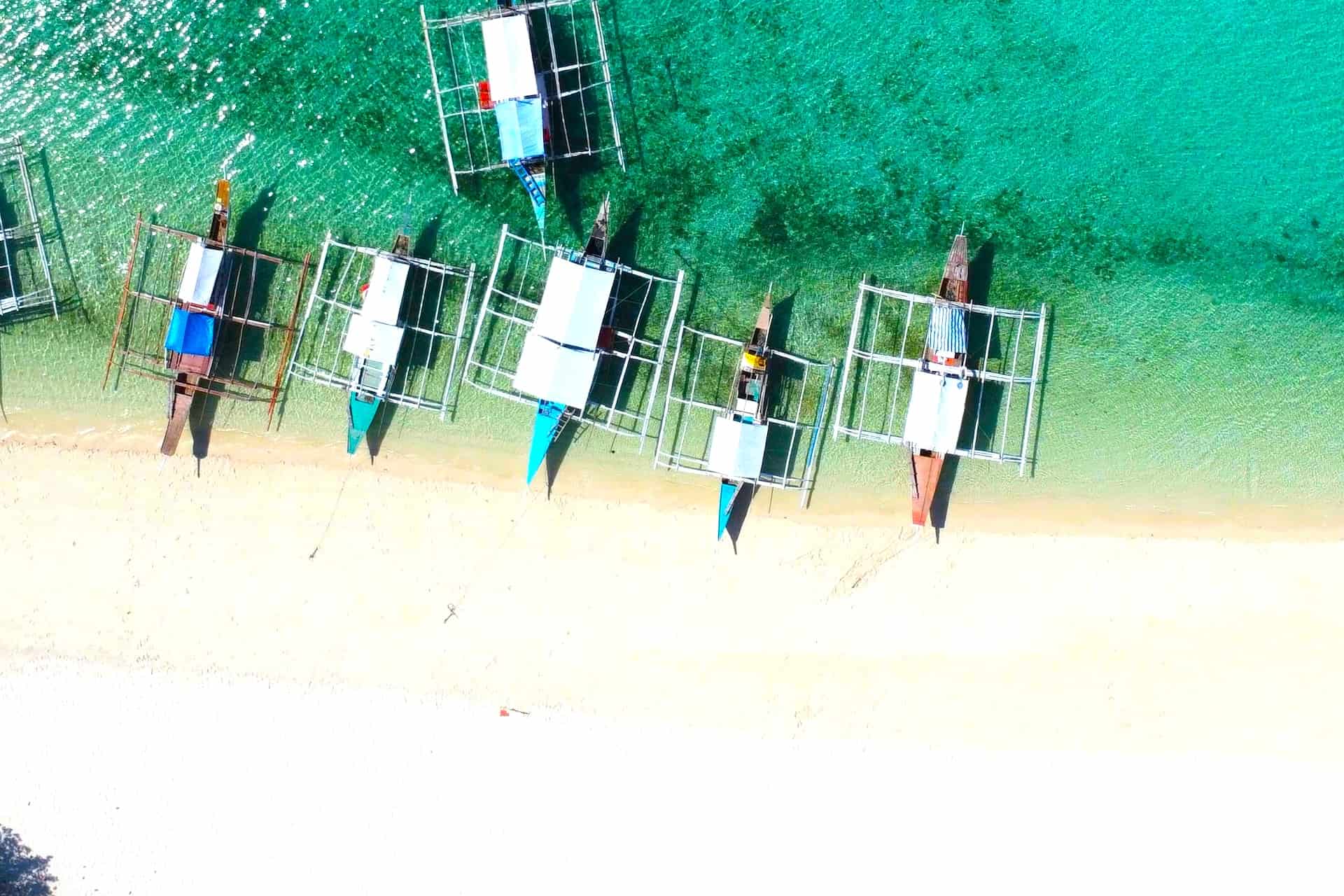
Why you should Visit Samar
Introduction to Samar's Allure
Samar, a jewel in the Eastern Visayas region of the Philippines, is a destination that captivates the hearts of travelers. Known for its rich history, diverse culture, and stunning natural beauty, Samar Island offers an unparalleled experience for those who seek adventure and serenity in equal measure.
Samar's Natural Wonders
Samar is blessed with an abundance of natural wonders. The island's landscape is a spectacular blend of majestic mountains, dense rainforests, and serene beaches. Exploring the Sohoton Natural Bridge National Park is a must for any visitor, where the natural stone arch and the lush greenery create a picturesque setting. For the more adventurous, the awe-inspiring Langun-Gobingob Caves, one of the largest cave systems in Asia, offers a thrilling spelunking experience.
Rich Cultural Heritage
The cultural tapestry of Samar is vibrant and diverse. The island's history is intricately woven with tales from the Spanish colonial era, reflected in its historic churches and age-old traditions. Festivals like the Sinulog and Karisyohan in Calbayog City are vibrant celebrations of Samar's culture and history, showcasing the island's unique customs and colorful heritage.
Samar's Gastronomic Delights
Cuisine in Samar is a delightful experience, with a variety of dishes that tantalize the taste buds. The island's proximity to the sea means that seafood is fresh and abundant. Traditional Filipino dishes, enriched with local flavors and ingredients, provide a culinary journey that is both exotic and familiar.
Samar's Eco-Tourism Appeal
Eco-tourism in Samar is growing, with a focus on sustainability and preservation. The island's natural attractions are maintained with great care, ensuring that they remain unspoiled for future generations. This responsible approach to tourism allows visitors to enjoy Samar's beauty while contributing to the conservation of its natural and cultural resources.
Engaging in Samar's Outdoor Adventures
For those who crave outdoor adventures, Samar is a playground waiting to be explored. Activities like kayaking along the Ulot River, trekking to hidden waterfalls like Tarangban and Lulugayan, or island-hopping along its pristine beaches offer exhilarating experiences amidst breathtaking scenery.
Samar's Welcoming Community
One of the island's greatest treasures is its people. The warmth and hospitality of the Samaritans are legendary. Visitors are welcomed with open arms and treated like family, making any trip to Samar a genuinely heartwarming experience.
Conclusion: The Unforgettable Charm of Samar
Samar is more than just a travel destination; it's an experience that leaves a lasting impression on your heart and soul. Its blend of natural beauty, rich history, vibrant culture, delicious cuisine, and friendly people makes Samar a must-visit for any traveler. A journey to Samar is an adventure into the very essence of the Philippines, a discovery of a paradise that remains etched in your memories forever.
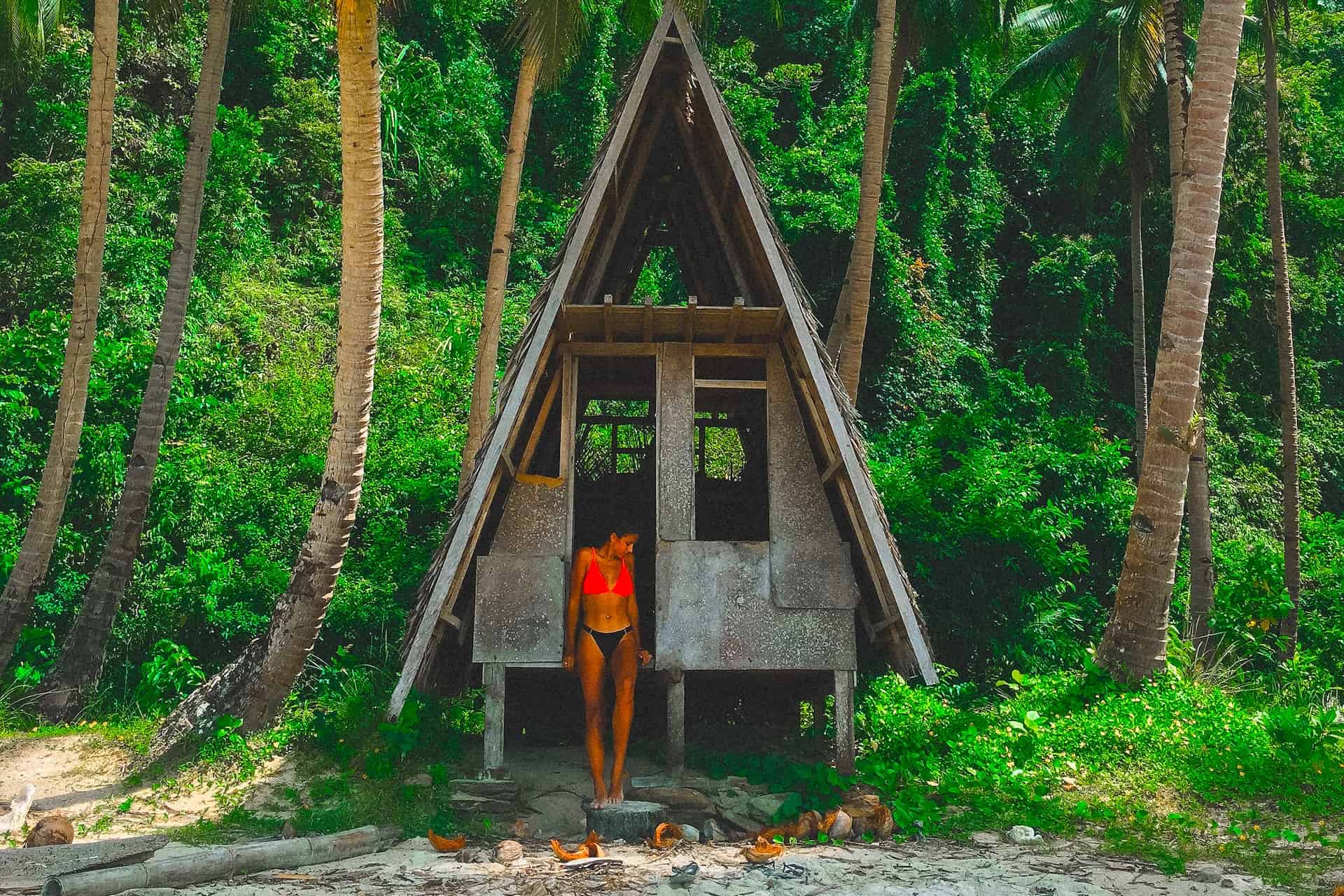
Samar Island Facts
1. Introduction to Samar
Samar, a jewel nestled in the heart of the Philippines, is an island that weaves a tapestry rich in history, culture, and natural beauty. Spanning across the Eastern Visayas region, Samar Island emerges as a significant geographical and cultural landmark, offering a mosaic of experiences that reflect the vibrant spirit of the Philippines.
Samar, often referred to as the “Island of Contrasts,” is uniquely positioned in the country. With its vast expanse, Samar stands as the third-largest island in the Philippines. This distinction sets the stage for a journey through its diverse landscapes, from its lush, verdant forests to its serene, sprawling coastal rice plains. The island's geography is a testament to the Philippines' rich natural heritage, with Samar playing a pivotal role in showcasing this legacy.
Samar Island is divided into three provinces: Eastern Samar, Northern Samar, and Western Samar. Each of these provinces contributes distinct flavors to the island's overall character. Eastern Samar, with its picturesque coastline and vibrant local communities, paints a picture of a region deeply connected to the sea. Northern Samar offers a glimpse into the rugged, untamed beauty of the island, with its dense forests and rich biodiversity. Meanwhile, Western Samar, with its historical significance and cultural landmarks, serves as a gateway to the island's storied past.
The demographic landscape of Samar is as varied as its physical one. The total population of Samar reflects a melting pot of cultures and traditions, with demographics population of one city each province adding its own unique demographic thread to the island's social fabric. According to the Philippine Statistics Authority, the demographics of Samar showcase a blend of indigenous groups, each with their unique customs, languages, and heritage. This diverse demographic composition not only enriches Samar's cultural tapestry but also offers a window into the Philippines' broader demographics population societal dynamics.
Samar's historical journey is deeply intertwined with the broader narrative of the Philippines. The island played a crucial role during the Philippine-American War, serving as a strategic location for both American forces and Filipino forces. This period in Samar's history is marked by significant events that shaped the island's future and left an indelible mark on its collective memory.
The San Juanico Bridge, an architectural marvel, connects Samar with the neighboring island of Leyte. This bridge is not just a feat of engineering but also a symbol of the unity and resilience of the Filipino people. It stands as a testament to the island's strategic importance in the country's transportation and infrastructure network.
Samar's physical features are characterized by their dramatic and varied nature. The island boasts coastal plains that gently slope towards the Samar Sea, offering stunning vistas and fertile grounds for agriculture. In contrast, the interior of the island reveals a landscape that is generally steep and deeply dissected, with rugged terrain that has shaped the lives of the local population.
Samar's geographical diversity extends to its climatic conditions as well. The island experiences a tropical climate, with significant rainfall distributed throughout the year. The months from June to October are particularly notable for their heavier precipitation, which can provoke flooding in certain areas. This climate not only influences the island's natural ecosystems but also affects the agricultural practices and daily lives of the Samar people.
The Samar Sea, a significant body of water surrounding the island, plays a crucial role in the lives of the city and residents. It not only provides a source of livelihood through fishing but also serves as a vital conduit for transportation and trade. The San Juanico Strait, another key geographical feature, further east and further accentuates Samar's connection to the surrounding regions, facilitating the movement of goods and people between islands.
Samar's role in the Philippines extends beyond its geographical boundaries. The island, with its rich history, diverse population, and striking landscapes, contributes significantly to the cultural and economic tapestry of the country. As one of the larger islands in the Philippines, Samar holds a place of prominence, offering a unique blend of natural beauty, historical depth, and cultural richness.
In conclusion, Samar is an island that encapsulates the essence of the Philippines. From its rugged mountains to its serene coastal plains, from its rich historical tapestry to its diverse demographic makeup, Samar stands as a microcosm of the country. It is a place where history, culture, and nature converge, offering a glimpse into the heart and soul of the Filipino people. As we delve deeper into Samar's story, we uncover layers of intrigue, beauty, and resilience that define this remarkable island.
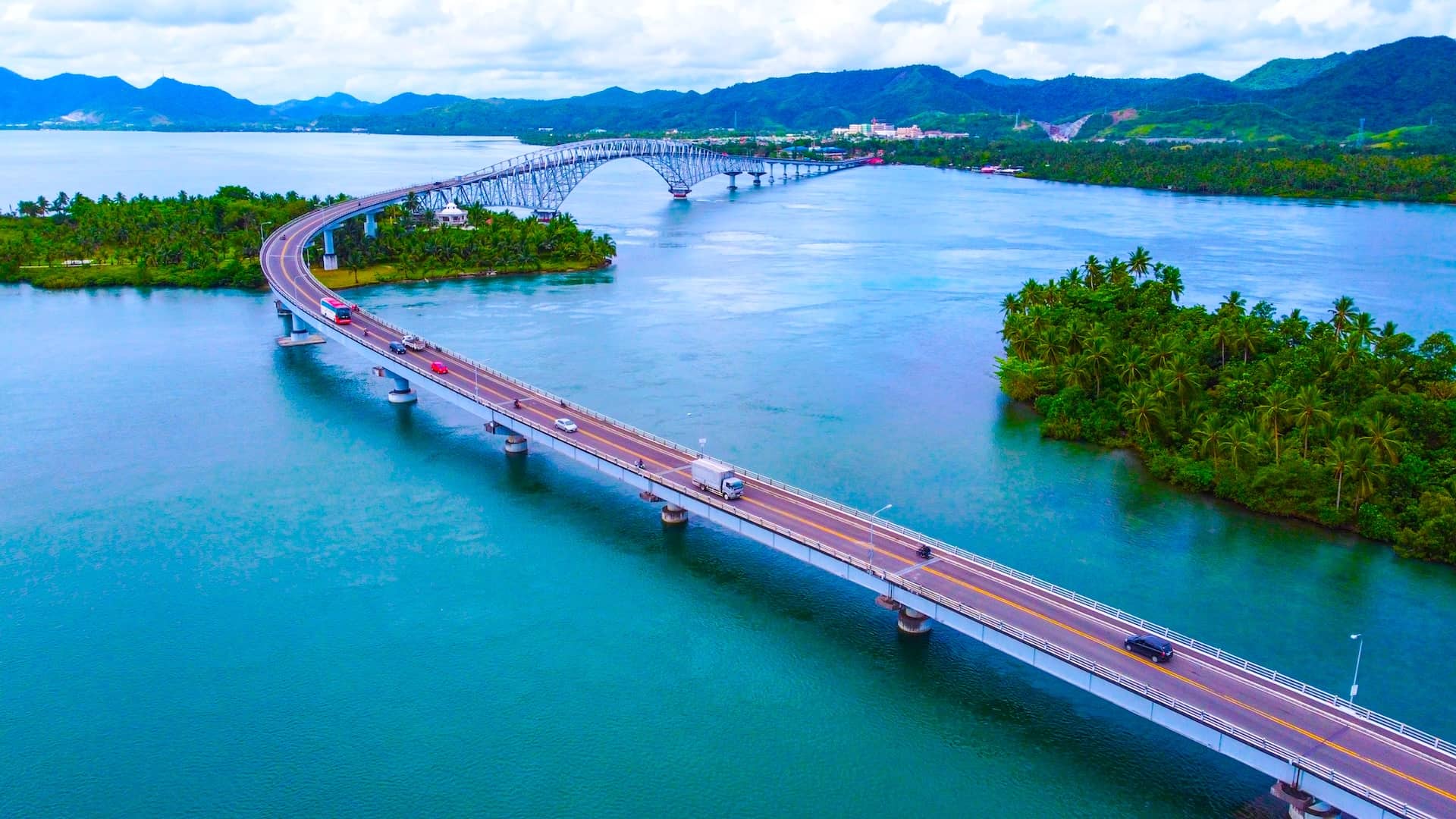
2. Geographical Overview
Samar, an island etched with natural splendor and historical significance, stands proudly as the third-largest island in the Philippine archipelago. Encompassing a diverse landscape that ranges from rugged, mountainous terrain to serene coastal plains, Samar Island is a testament to the Philippines' rich and varied topography. The island's geography, marked by its rough physical features, plays a pivotal role in shaping the daily lives and culture of the Samar people.
Divided into three main provinces – Eastern Samar, Northern Samar, and Western Samar – the island offers a unique blend of geographical features and cultural experiences. Eastern Samar, gracing the eastern part of the island, is known for its picturesque coastline along the Pacific Ocean. This region, with its beautiful beaches and fishing communities, contributes significantly to the local economy and culture. the Northern coast of Samar, on the other hand, is characterized by its rugged terrain and lush forests. The northern coast of Samar faces the Samar Sea and is dotted with small islands and bays, adding to the province's scenic beauty. Western Samar, located on the western part of Samar Island, is steeped in history and culture, reflecting the island's rich past and resilient spirit.
Samar's topography is deeply dissected, featuring a landscape that is generally steep and rugged. This terrain has been both a challenge and a boon to the local population. The island's interior is dominated by mountain ranges and dense forests, which have historically provided natural protection and resources to the inhabitants. The coastal plains west of Samar, meanwhile, offer fertile land for agriculture, supporting the local economy and providing sustenance for the population.
The total population of Samar, as recorded by the Philippine Statistics Authority, reflects the island's diversity. With a mix of various ethnic groups and communities, the demographics of Samar are a melting pot of cultures. This diversity is further enriched by the unique cultural practices and traditions of each province. The local population, deeply connected to the land and sea, has developed a way of life that is in harmony with Samar's varied landscape.
Samar's strategic location has made it an important player in the history of the Philippines. During the Philippine-American War, the island was a significant battleground, witnessing clashes between American forces and Filipino forces. The remnants of this tumultuous period are still evident in the island's culture and historical sites. This war, a defining moment in Samar's history, has left a lasting impact on the identity and character of the island.
The Samar Sea, surrounding the north, southeast and east of the island, is a crucial element of Samar's geography. This body of water not only provides a rich source of marine life, crucial for the fishing communities, but also serves as a vital link for transportation and trade. The coastal areas along the Samar Sea are characterized by their beautiful beaches and rich biodiversity, attracting tourists and nature enthusiasts.
One of the most iconic landmarks of Samar is the San Juanico Bridge, the longest bridge in the Philippines, connecting Samar to the neighboring island of Leyte. This architectural marvel, spanning the San Juanico Strait, is not only a significant infrastructural achievement samar province but also a symbol of connection and unity in the region.
Samar, with its unique geographical features, plays a key role in the Eastern Visayas region. The island's provinces, each with their distinct characteristics, contribute to the overall diversity and richness of the region. From the eastern shores of Eastern Samar, south to the western boundaries of Western Samar, the island offers a panorama of landscapes and experiences.
The climate of Samar province is typically tropical, marked by heavy rainfall, especially from June to October. This climate has a profound effect on the island province's ecosystem and agricultural practices. The heavy rains, while vital for the crops, can also provoke flooding in certain areas samar province, posing challenges to the local communities.
In summary, the geographical overview of Samar reveals an island of contrasts and diversity. From its rugged interior to its serene coastal plains, from its rich history to its vibrant culture, Samar is a true representation of the natural beauty and resilient spirit of the Philippines. As we continue to explore Samar's many facets, we uncover the depth and richness of this remarkable island, a place where nature, history, and culture intertwine to create a unique and unforgettable experience.
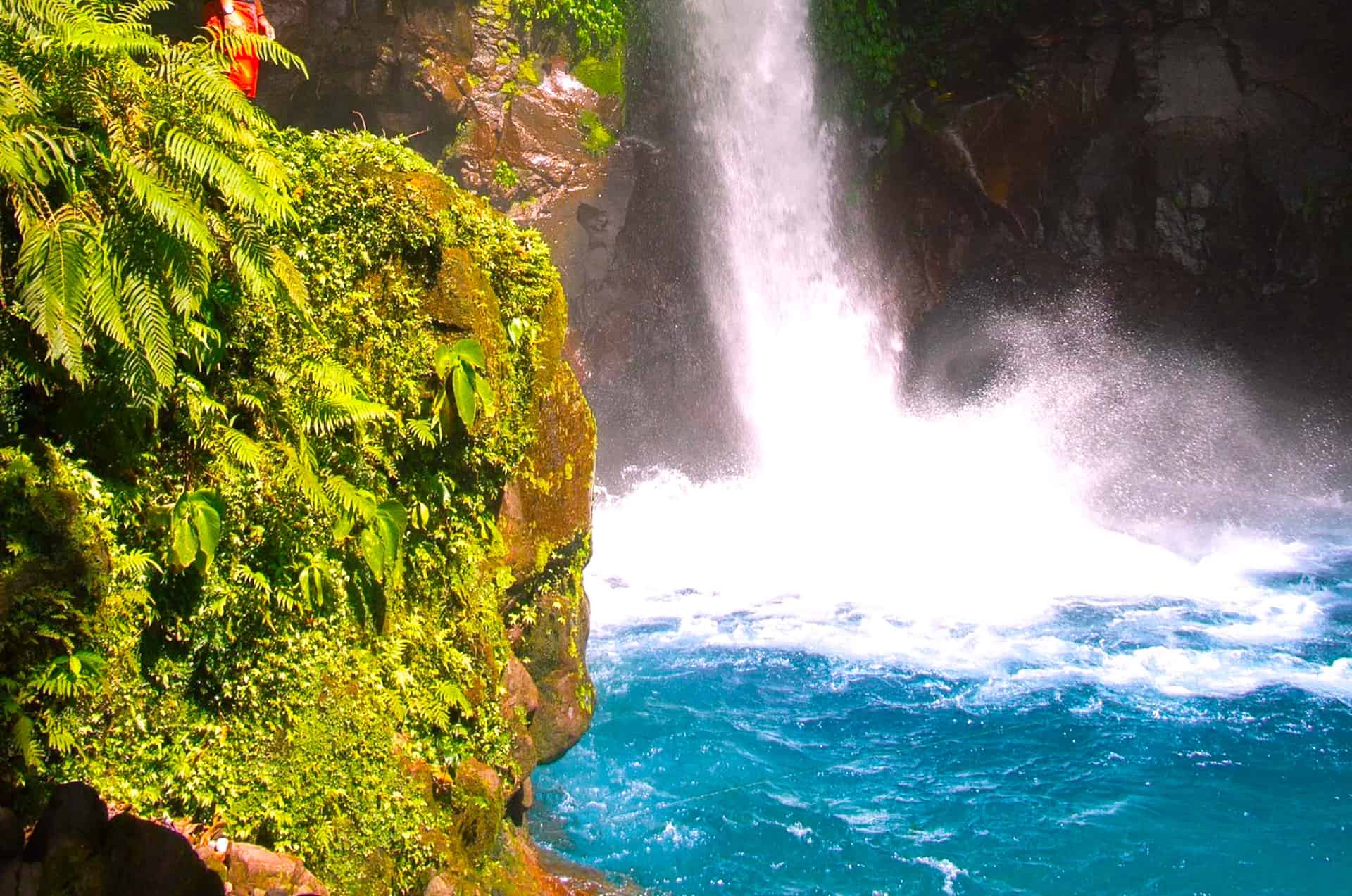
3. Historical Significance
Samar, an island steeped in the annals of Philippine history, offers a narrative that intertwines the past with the present. The historical significance of Samar Island is not just a tale of time but a living chronicle that continues to shape the identity of its people and the entire nation. From the era of the Spanish occupation to the defining moments of the Philippine-American War, Samar has been a silent witness and an active participant in the shaping of Philippine history.
The historical journey of Samar began long before the Spanish set foot on its shores. The island's strategic location made it a pivotal point for early trade and cultural exchanges. However, it was the arrival of the Spaniards that marked a significant turning point in Samar's history. The Spanish occupation brought with it a new religion, new governance, and new cultural influences that left an indelible mark on the island's societal fabric. The Spaniards, captivated by Samar's natural beauty and strategic position, established several towns and played a key role in introducing Christianity to the region.
But it was during the Philippine-American War that Samar etched its name in the annals of Philippine history. This period was marked by significant strife and turmoil, as Filipino forces bravely fought against American forces for the island's and the nation's sovereignty. The war left scars on the island, both physical and emotional, that are remembered and honored to this day. The resilience and bravery shown by the Samar people during this time are a testament to their spirit and have become a source of inspiration for generations.
The San Juanico Bridge, connecting Samar with Leyte, is more than a feat of engineering; it is a symbol of resilience and unity. This bridge, spanning the San Juanico Strait, stands as a reminder of the island's historical significance and its role in the unification of the Eastern Visayas region. The bridge, apart from its practical utility, is a tourist attraction, drawing visitors eager to witness this architectural marvel and the breathtaking views it offers of the Samar Sea and the surrounding landscapes.
Samar's role in the Philippine-American War is particularly noteworthy. The island became a battleground where Filipino forces displayed extraordinary courage and determination. This period in Samar's history is remembered as a time of both suffering and destruction and heroism. The American forces, recognizing the strategic importance of Samar, engaged in several battles across the island. These encounters left a lasting impact on the local population, reshaping the social and political landscape of Samar.
The aftermath of the war saw Samar emerging as a more resilient and united region. The experience of the war galvanized the Samar people, fostering a sense of community and national pride that endures to this day. The island's role in the war is a crucial chapter in the Philippine narrative of struggle and triumph, a chapter that continues to be honored and remembered by the people of Samar and the entire nation.
Samar's history is also marked by natural calamities and challenges. The island's geographical location makes it prone to typhoons and natural disasters. Over the years, Samar has faced numerous storms and typhoons that have tested the resilience of its people. The local population, accustomed to these challenges, has developed a remarkable ability to adapt and recover. This resilience in the face of adversity is a defining characteristic of the Samar people and is woven into the very fabric of their history and culture.
The historical tapestry of Samar is rich and varied, encompassing centuries of change, challenges, and triumphs. From the early days of trade and cultural exchanges to the trials of war and natural calamities, the history of Samar is a microcosm of the Philippine experience. The island's past is not just a series of events but a living history that continues to influence and shape the present and future of Samar and its people.
Samar's historical significance is not confined to its past battles and challenges. The island has also been a cradle of culture and tradition. The blending of indigenous practices with Spanish influences has given rise to a unique cultural identity that is distinctly Samar. This cultural heritage is evident in the island's festivals, art, music, and daily life. The preservation and celebration of this rich cultural heritage are a priority for the Samar people, ensuring that their history and traditions are passed down to future generations.
In conclusion, the historical significance of Samar cannot be overstated. The island's past is a mosaic of courage, resilience, and transformation. From the Spanish occupation to the Philippine-American War, from natural calamities to cultural evolution, the history of Samar is a testament to the enduring spirit of its people. As we delve deeper into the historical journey of Samar, we uncover a narrative that is not only about the island but about the Philippine nation as a whole.
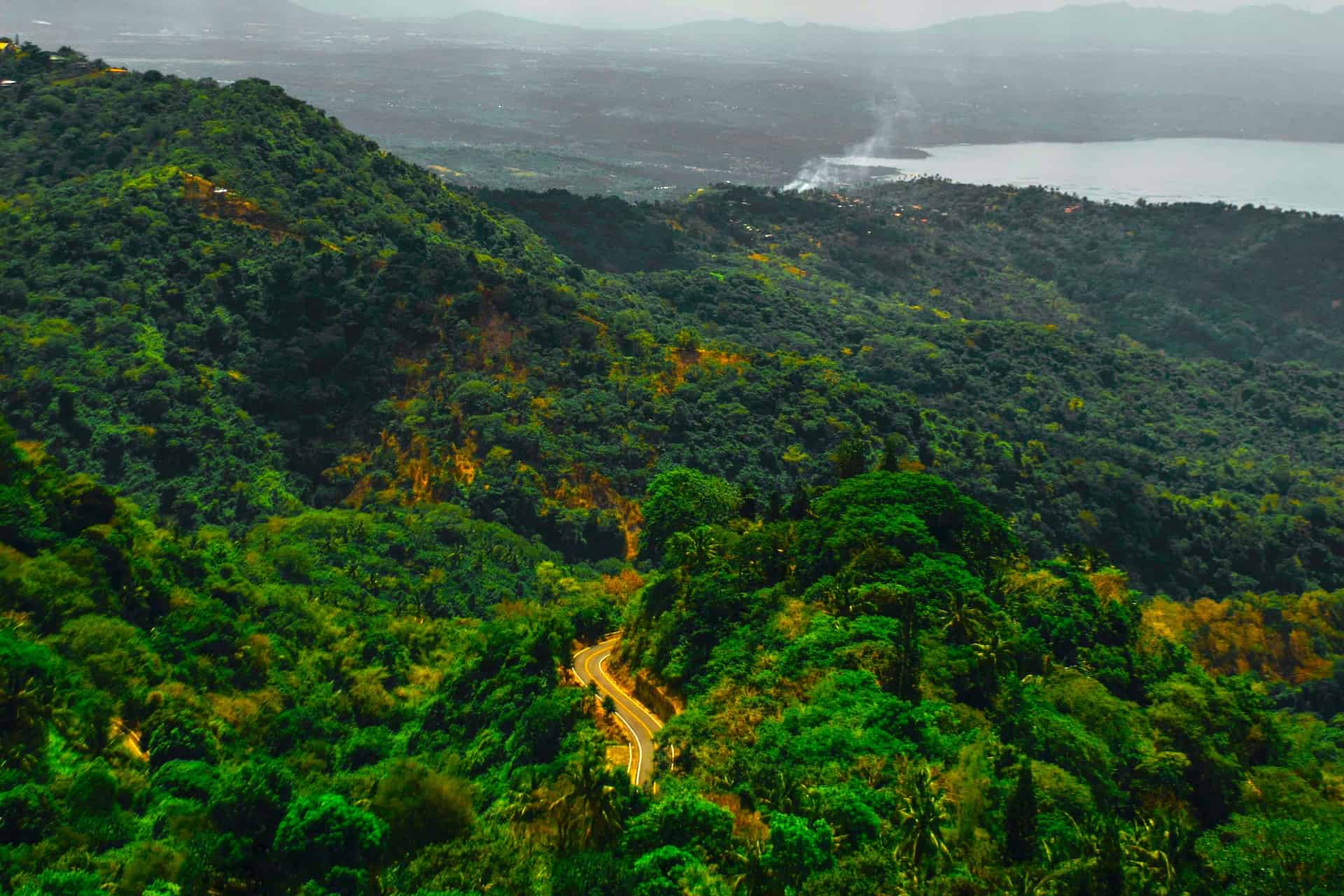
4. Demographics and Population
Samar, an island rich in cultural diversity and historical significance, is home to a vibrant tapestry of people whose lives and stories are as varied as the island's lush landscapes. The population of Samar Island is a reflection of the Philippines' broader mosaic, embodying a blend of ethnicities, languages, and traditions. This section delves into the demographics of Samar, exploring the intricate interplay of its people, culture, and history.
The Philippine Statistics Authority provides detailed data on the population of Samar, painting a picture of a region marked by diversity and growth. The total population of Samar, encompassing Eastern Samar, Northern Samar, and Western Samar, showcases a blend of indigenous groups, settlers, and migrants, each contributing to the island's rich cultural tapestry. This diverse demographic composition not only reflects Samar's historical journey but also highlights the island's role as a melting pot of cultures in the Eastern Visayas region.
Eastern Samar, known for its stunning coastal landscapes and rich historical sites, is home to a population that is deeply connected to the sea. The native people of Eastern Samar, or Eastern Samareños, have a culture and lifestyle that is shaped by their proximity to the Pacific Ocean. Fishing and agriculture are the mainstays of their economy, and this connection to the land and sea is evident in their daily lives and traditions.
Northern Samar, with its rugged terrain and dense forests, presents a different demographic profile. The population here is adapted to a life that is in harmony with the challenging topography of the region. The Northern Samareños have a strong sense of community and resilience, traits that have been honed by years of living in an environment that demands adaptability and resourcefulness.
Western Samar, the gateway to the island's storied past, has a demographic makeup that is a testament to its historical significance. The population here is a blend of the island's indigenous groups and descendants of settlers from other parts of the Philippines. The cultural practices and traditions of Western Samar are deeply influenced by its history, from the Spanish colonial period to the Philippine-American War.
The local population of Samar is characterized by a sense of unity in diversity. Despite the differences in language, traditions, and lifestyles across the provinces, there is a shared identity that binds the people of Samar. This unity is celebrated in the island's festivals, rituals, and daily interactions, showcasing a community that is diverse yet cohesive.
The demographics of Samar also reveal interesting insights into the population's age structure. The island has a relatively young population by age five, with a significant proportion of children under age five and young children under age five and adults with children under age five. This youthful demographic brings with it a dynamism and energy that is evident in the island's cultural and economic activities.
The total population of Samar, according to the latest census, reflects a region that is growing and evolving. The increase in population over the years has brought challenges and opportunities. While there is a need to address issues such as education, healthcare, and employment, the growing population also presents an opportunity for economic growth and cultural enrichment.
Samar's population is not just a statistic; it is a living, breathing entity that is constantly shaping and being shaped by the island's geography, history, and culture. From the fisherfolk of Eastern Samar to the farmers of Western Samar, from the artisans of Northern Samar to the educators and entrepreneurs across the island, the people of Samar are the heart and soul of the region.
In summary, the demographics and population of Samar offer a glimpse into the soul of the island. The diverse and dynamic population is a reflection of Samar's rich history, varied geography, and vibrant culture. As we explore the lives and stories of the people of Samar, we gain a deeper understanding of the island's identity and its place in the tapestry of the Philippine nation. Samar's population, with its complexities and contradictions, is a testament to the resilience, adaptability, and spirit of the Filipino people.
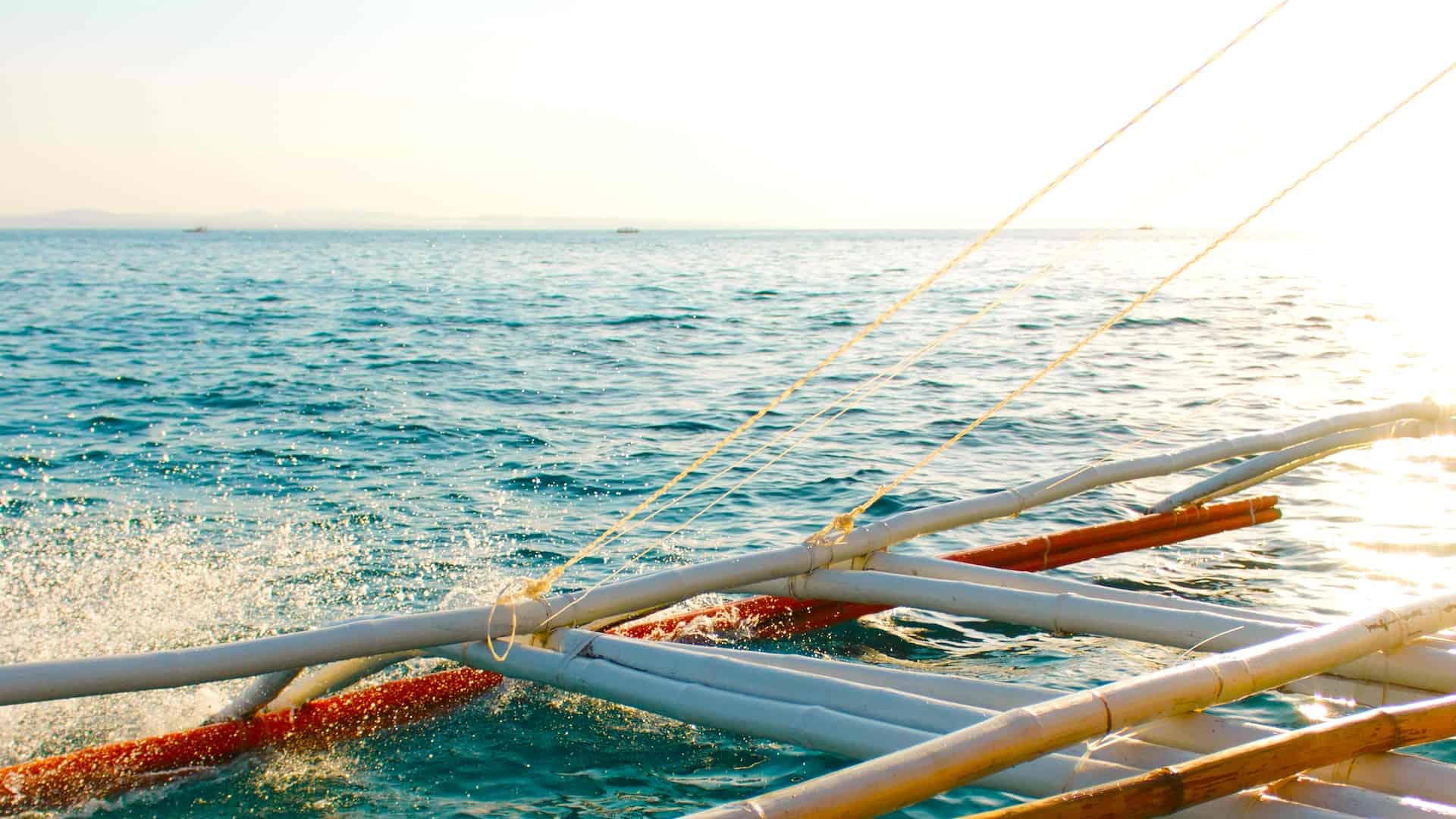
5. Culture and Lifestyle
Samar, an island of vibrant colors and profound history, is a melting pot of cultures that resonate through its lands and people. The culture and lifestyle of Samar Island are as diverse as its landscapes, echoing the rich tapestry of its past and the dynamic rhythm of its present. This section delves into the essence of Samar's cultural identity, exploring the traditions, beliefs, and everyday life that define the Samar people.
The culture of Samar is a harmonious blend of indigenous customs, Spanish influences, and modern Filipino traits. This fusion is evident in the island's festivals, cuisine, arts, and daily practices. The Samar people, known for their warmth and resilience, have preserved their cultural heritage while adapting to the changing times, creating a unique cultural identity that is distinctly their own.
One of the most vivid expressions of Samar's culture is its festivals. These events are not just celebrations; they are a vibrant showcase of the island's history, folklore, and community spirit. Each province in Samar – Eastern Samar, Northern Samar, and Western Samar – has its own set of festivals that reflect their local history and beliefs. These festivals are a kaleidoscope of music, dance, and art, drawing visitors from across the Philippines and beyond.
The cuisine of Samar is another aspect of its cultural richness. The island's location, surrounded by the Samar Sea and the Pacific Ocean, means that seafood is a staple in the local diet. Samar's culinary offerings are a delightful mix of traditional Filipino dishes and local specialties, with each province adding its unique flavor to the cuisine. The food of Samar is not just nourishment; it is a narrative of the island's history and geography, a story told through flavors and ingredients.
In terms of lifestyle, the people of Samar lead lives that are deeply intertwined with their natural surroundings. The coastal communities, particularly in Eastern Samar, are centered around fishing and small-scale agriculture. The sea is not just a source of livelihood; it is a part of the community's identity, shaping their routines, customs, and celebrations.
The interior regions of Samar, characterized by rugged terrain and dense forests, have a lifestyle that is attuned to the challenges and gifts of the land. Here, farming and forestry are the mainstays of the economy, with the local population developing skills and practices that are in harmony with the environment. This connection to the land is reflected in the crafts, stories, and traditions of the people, a testament to their resilience and resourcefulness.
Education and learning are highly valued in Samar, with the island being home to several institutions that cater to a range of educational needs. Samar State University, Eastern Samar State University, and Northwest Samar State University are key centers of learning, offering opportunities for higher education and research. These institutions play a crucial role in the development of the island, nurturing the next generation of Samar's leaders, thinkers, and innovators.
The arts and crafts of Samar are a vibrant part of its cultural landscape. The island's artisans are known for their skill in weaving, pottery, and other traditional crafts. These crafts are not just products; they are a form of cultural expression, reflecting the island's history, beliefs, and artistic sensibilities. The artisans of Samar, through their work, keep the island's traditions alive, passing on their knowledge and skills to future generations.
The daily life in Samar is a blend of tradition and modernity. In the towns and villages, one can see the seamless integration of traditional practices with contemporary conveniences. The markets are bustling with activity, selling everything from fresh produce to handmade crafts. The streets are alive with the sounds of everyday life, a symphony that speaks of the island's vibrancy and diversity.
In summary, the culture and lifestyle of Samar are a reflection of the island's rich history and dynamic present. From its colorful festivals to its flavorful cuisine, from its traditional crafts to its modern educational institutions, Samar is an island that celebrates its heritage while embracing the future. As we explore the cultural landscape of Samar, we discover an island that is not just a place but a living, breathing cultural entity. Samar's culture and lifestyle are a testament to the resilience, creativity, and spirit of its people, a narrative that continues to evolve and inspire.
6. Political Structure
Samar Island, with its rich history and diverse culture, also boasts a complex and dynamic political landscape. The political structure of Samar is a reflection of its geographical division and historical development. This section delves into the intricacies of Samar's political organization, examining how it shapes and is shaped by the island's three provinces: Eastern Samar, Northern Samar, and Western Samar.
Samar's political framework is deeply rooted in the Philippines' system of local governance. The island is divided into three distinct provinces, each with its own provincial government. These provinces are further subdivided into municipalities, which are the basic units of local government in the Philippines. The municipalities of Samar, each with its own local government, play a crucial role in the administration of the island and the delivery of public services.
Eastern Samar, facing the vast expanse of the Pacific Ocean, has its own unique political challenges and opportunities. The province's municipalities are mostly coastal, with communities that rely heavily on fishing and small-scale agriculture. The local governments in Eastern Samar are tasked with addressing the specific needs of these communities, including infrastructure development, disaster preparedness, and economic support.
Northern Samar, characterized by its rugged terrain and dense forests, presents a different set of political dynamics. The municipalities here are often remote, with limited access to basic services. The local governments in Northern Samar face the challenge of connecting these remote areas, providing education, healthcare, and other essential services. The political leaders of Northern Samar are also responsible for managing the province's natural resources, ensuring sustainable use and conservation.
Western Samar, with its rich historical heritage and cultural significance, has a political structure that reflects its diverse population. The municipalities in Western Samar are a mix of urban and rural areas, each with its own needs and priorities. The local governments here are focused on balancing development with cultural preservation, ensuring that the province's growth does not come at the cost of its heritage.
The political structure of Samar is not just about administration and governance; it is also about representation and participation. The people of Samar, through their elected officials, have a voice in the decision-making processes that affect their lives. This participatory aspect of Samar's political system is crucial in ensuring that the needs and aspirations of its diverse population are addressed.
Samar's political landscape is also influenced by its regional context. As part of the Eastern Visayas region, Samar's political decisions and developments are interconnected with those of its neighboring islands and provinces. This regional collaboration is essential in addressing larger issues that affect the entire region, such as economic development, environmental protection, and disaster response.
The municipalities of Samar, each with its own local council and elected officials, are the backbone of the island's political structure. These municipalities are responsible for a range of functions, from public health and safety to education and infrastructure. The effectiveness of local governance in Samar is a key factor in the island's overall development and well-being.
In addition to the formal political structure, Samar also has a rich tradition of grassroots activism and community involvement. The people of Samar are known for their active participation in civic affairs, often organizing and mobilizing to address local issues and advocate for their rights. This community-driven approach to politics is a testament to the democratic spirit of the Samar people.
In conclusion, the political structure of Samar is a complex and dynamic system that reflects the island's geographical diversity, historical background, and cultural richness. From the provincial governments to the local municipalities, from formal governance to grassroots activism, the political landscape of Samar is an integral part of its identity and development. As we explore the political nuances of Samar, we gain a deeper understanding of how governance, representation, and participation come together to shape the future of this vibrant island.
7. Natural Wonders and Tourism
Samar Island, a gem in the heart of the Philippines, is a haven of natural beauty and cultural richness. Known for its lush landscapes, pristine beaches, and vibrant traditions, Samar has become an increasingly popular destination for tourists seeking a blend of adventure, relaxation, and cultural immersion. This section explores the natural wonders of Samar and its burgeoning tourism industry, highlighting the unique experiences the island offers to visitors from around the world.
The natural landscape of Samar is a diverse tapestry of ecological wonders, ranging from rugged mountains and dense rainforests to serene coastal areas and hidden coves. This geographical diversity has made Samar a hotspot for eco-tourism, attracting nature enthusiasts and adventure seekers alike. The island's vast forests are home to a rich array of flora and fauna, some of which are endemic to the region, offering a glimpse into the Philippines' biodiversity.
One of the most iconic natural attractions in Samar is the San Juanico Strait, famed for its breathtaking beauty and the legendary San Juanico Bridge that spans it. The strait, with its crystal-clear waters and diverse marine life, is a paradise for water sports enthusiasts, offering opportunities for diving, snorkeling, and kayaking. The San Juanico Bridge itself is not just a feat of engineering but a scenic viewpoint, providing panoramic views of the strait and the surrounding landscapes.
The coastal regions of Samar, particularly in Eastern Samar, are adorned with pristine beaches and unspoiled coves. These areas are perfect for those seeking a break or a tranquil retreat, away from the hustle and bustle of city life. The beaches of Samar are not just spots for relaxation but also hubs of local culture, where visitors can experience the warm hospitality of the Samar people and indulge in the island's culinary delights.
Samar's tourism industry is not limited to its natural attractions; the island is also rich in cultural and historical sites. From ancient churches and historic landmarks to vibrant festivals and traditional crafts, Samar offers a cultural journey that complements its natural beauty. The island's festivals, in particular, are a colorful display of Samar's traditions and history, drawing tourists who are keen to experience the local culture firsthand.
The development of tourism in Samar has been a key focus for the local government and communities. Efforts have been made to promote sustainable tourism practices, ensuring that the natural and cultural heritage of Samar is preserved for future generations. This sustainable approach to tourism is reflected in the community-based tourism initiatives, where local residents are actively involved in the management and promotion of tourism activities.
Samar's growing tourism sector has also brought about economic benefits to the island. The influx of tourists has led to the creation of jobs and business opportunities, particularly in the hospitality and service industries. This economic boost has been instrumental in improving the livelihoods of many local residents, contributing to the overall development of the island.
However, the rise in tourism also presents challenges, particularly in terms of environmental conservation and cultural preservation. The local government and communities of Samar are faced with the task of balancing the economic benefits of tourism with the need to protect the island's natural and cultural assets. This balancing act is crucial in ensuring that Samar remains a sustainable and responsible travel destination.
In conclusion, the natural wonders and tourism industry of Samar are integral components of the island's charm and appeal. From its stunning landscapes and rich biodiversity to its cultural heritage and sustainable tourism initiatives, Samar offers a unique and fulfilling experience for visitors. As the island continues to attract tourists from around the globe, the challenge lies in maintaining the delicate balance between development and preservation, ensuring that Samar remains a treasure trove of natural beauty and cultural richness for years to come.
8. Infrastructure and Development
Samar Island, an integral part of the Philippines archipelago, has witnessed substantial growth and development in recent years. This section of the article delves into the infrastructure and development of Samar, highlighting the strides made in modernizing the island while preserving its unique cultural and natural heritage.
The development of infrastructure in Samar has been a key focus for both the local and national governments. Given its strategic location and rich resources, Samar has seen a range of infrastructure projects aimed at enhancing connectivity, boosting the economy, and improving the quality of life for its residents.
One of the most significant infrastructural achievements in Samar is the iconic San Juanico Bridge, connecting the island to the neighboring Leyte. This architectural marvel is not only a crucial transportation link but also a symbol of unity and progress for the region. The bridge has significantly reduced travel time between the islands, fostering economic and cultural exchanges.
Transportation infrastructure in Samar has undergone considerable improvements. The development of roads, bridges, and ports has been pivotal in connecting the remote areas of the island with the more developed urban centers. These improvements have facilitated easier movement of goods and people, contributing to the economic vitality of the island.
Samar's economy has traditionally been based on agriculture and fishing, with these sectors being the primary sources of livelihood for a large portion of the population. In recent years, there has been a concerted effort to diversify the economy, with investments in tourism, manufacturing, and services. The development of eco-tourism, in particular, has been a focus, capitalizing on Samar's natural beauty while promoting sustainable practices.
The local government of Samar has been instrumental in driving development initiatives. These initiatives include improving access to education and healthcare, investing in renewable energy projects, and promoting local industries. The government's commitment to inclusive growth has been crucial in ensuring that the benefits of development reach all sectors of society.
However, development in Samar has not been without its challenges. Balancing economic growth with environmental conservation remains a key concern. The island's rich biodiversity and natural resources need to be protected, even as it pursues economic development. This has led to the implementation of various environmental protection and sustainable development policies.
In terms of healthcare and education, significant strides have been made in Samar. The establishment of hospitals, clinics, and health centers has improved access to healthcare services, especially in rural areas. Education has also received a boost, with the construction of new schools and the improvement of existing educational facilities. Institutions like Samar State University have been pivotal in providing quality higher education and research opportunities.
The development of communication and technology infrastructure has also been a focus in Samar. The expansion of telecommunications networks and internet access has connected Samar more closely with the rest of the Philippines and the world. This connectivity has opened up new opportunities for education, business, and cultural exchange.
Samar's urban centers, such as Catbalogan City and Calbayog City, have seen significant development. These cities have become hubs of economic activity, offering a range of services and amenities to residents and visitors alike. The urban development, however, has been planned with a keen awareness of the need to preserve the cultural identity and natural beauty of the island.
In conclusion, the infrastructure and development of Samar reflect the island's journey towards modernization and growth, balanced with a deep respect for its cultural and natural heritage. The progress made in transportation, economy, education, healthcare, and technology has transformed Samar, making it a more connected, vibrant, and resilient region. As Samar continues to develop, the challenge lies in maintaining this balance, ensuring that the island's development is sustainable, inclusive, and respectful of its rich legacy.
9. Environmental Challenges
The lush landscapes of Samar Island, characterized by its rich biodiversity and natural resources, face a myriad of environmental challenges in the contemporary era. This section delves into the various environmental issues confronting Samar, examining their impacts and the measures being undertaken to address them.
Samar's diverse ecosystem, comprising dense rainforests, coastal areas, and marine environments, is under increasing pressure from a range of factors. The primary environmental concerns include deforestation, climate change impacts, pollution, and overfishing, each posing significant threats to the island's ecological balance.
Deforestation in Samar, primarily driven by illegal logging and land conversion for agriculture, has emerged as a critical challenge. The loss of forest cover not only threatens the habitat of numerous species but also impacts the local climate and hydrological cycles. The lush forests of Samar, once a haven for a wide array of flora and fauna, are now at risk, with consequences for biodiversity and the livelihoods of communities dependent on these forests.
Climate change poses another grave challenge to Samar. The island is increasingly vulnerable to the effects of global warming, including more intense and frequent typhoons, sea-level rise, and changing rainfall patterns. These changes have far-reaching implications for agriculture, fisheries, and overall community resilience. The inhabitants of Samar are often on the frontline of these climate-induced events, facing disruptions to their lives and livelihoods.
Pollution, particularly in coastal areas and urban centers, is another pressing concern. The discharge of untreated waste and runoff into water bodies has led to the degradation of Samar's marine ecosystems. This pollution not only affects the health of marine life but also impacts the communities reliant on these resources for food and income.
Overfishing in the waters surrounding Samar has led to the depletion of fish stocks, threatening the sustainability of local fisheries. This issue is compounded by the use of destructive fishing practices, which further harm the marine environment. The decline in fish populations not only affects biodiversity but also the economic well-being of the island's fishing communities.
In response to these environmental challenges, various initiatives and programs have been implemented in Samar. Reforestation efforts, aimed at restoring degraded forest areas, have been undertaken by both government and non-governmental organizations. These initiatives not only focus on planting trees but also on sustainable forest management and community involvement.
To combat the effects of climate change, Samar has seen the development of adaptation and mitigation strategies. These include the construction of resilient infrastructure, community awareness and preparedness programs, and the promotion of sustainable agricultural practices. The aim is to build the capacity of communities to cope with and adapt to changing environmental conditions.
Efforts to tackle pollution have involved the implementation of waste management systems and the promotion of environmentally friendly practices. This includes the treatment of industrial and household waste, as well as public education campaigns on the importance of environmental conservation.
To address the issue of overfishing, Samar has adopted measures such as the establishment of marine protected areas, the enforcement of fishing regulations, and the promotion of sustainable fishing practices. These efforts are aimed at conserving fish populations and ensuring the long-term viability of the province and fishing industry.
Despite these efforts, the environmental challenges facing Samar remain significant. There is a continuing need for comprehensive and coordinated actions to protect the island's natural environment. This includes strengthening policy frameworks, enhancing community participation, and fostering partnerships among government, private sector, civil society, and local communities.
In conclusion, the environmental challenges in Samar are a reflection of the broader issues facing the Philippines and the world at large. Addressing these challenges requires a holistic approach that balances environmental conservation with sustainable development. The future of Samar's environment hinges on the collective efforts of all stakeholders, working together to safeguard the island's natural heritage for generations to come.
10. Samar in Modern Times
In the evolving tapestry of the Philippines, Samar holds a unique and vital position. As one of the country's largest islands, Samar's role in the modern era is multifaceted, spanning cultural, economic, and environmental spheres. This section explores Samar Island's place in today's world, examining its contributions, challenges, and aspirations within the contemporary context.
Samar's cultural influence in the Philippines is profound. The island's rich history and diverse heritage continue to be a source of pride and identity for its inhabitants. Samar's traditions, from its vibrant festivals to its folk arts, resonate beyond its shores, contributing to the national cultural landscape. These traditions are not relics of the past; they are living practices that evolve, adapt, and thrive in the modern age.
Economically, Samar has experienced significant growth and diversification. While traditional sectors like agriculture and fishing remain important, the island has seen the development of new industries. Tourism, in particular, has become a vital part of Samar's economy, with the island's natural beauty and cultural richness attracting visitors from around the world. This economic diversification has brought new opportunities but also challenges, particularly in ensuring sustainable and inclusive growth.
Samar's role in the environmental stewardship of the Philippines is increasingly recognized. The island's vast natural resources, from its forests to its marine ecosystems, are seen as valuable assets that need protection. Samar has become a focal point for conservation efforts, addressing issues such as deforestation, climate change, and biodiversity loss. These efforts are not only crucial for Samar's environment but also for the ecological health of the entire region.
In the realm of governance and politics, Samar reflects the broader democratic processes of the Philippines. The island's political landscape is dynamic, with active participation from its citizens in shaping their communities. Samar's local governments, while facing various challenges, strive to address the needs of their constituents and improve public services. This active civic engagement is a testament to Samar's vibrant democratic spirit.
Education and human capital development have been key areas of focus in modern Samar. Institutions like Samar State University play a crucial role in nurturing the next generation of leaders, professionals, and innovators. The emphasis on education is seen as crucial for the island's future, equipping its youth with the skills and knowledge needed in an increasingly globalized world.
However, modern times have also brought challenges to Samar. Urbanization and the pressure on natural resources pose ongoing concerns. Balancing development with environmental sustainability is a constant struggle. Additionally, the island grapples with issues common to many parts of the Philippines, such as poverty, access to healthcare, and infrastructure needs.
Despite these challenges, Samar's resilience and adaptability are evident. The island has a history of overcoming adversity, from natural disasters to economic hardships. This resilience is a defining characteristic of the Samar people, who face the future with optimism and determination.
Samar's connection to the rest of the Philippines is also a key aspect of its modern identity. The island is not an isolated entity; it is part of a larger national narrative. The movement of people, goods, and ideas between Samar and other regions is vital for mutual growth and understanding. The San Juanico Bridge, as a physical and symbolic link, epitomizes this interconnectedness.
In conclusion, Samar's role in modern times is multifaceted and evolving. The island is a microcosm of the Philippines, reflecting its cultural diversity, economic aspirations, environmental challenges, democratic processes, and educational pursuits. As Samar navigates the complexities of the 21st century, it continues to contribute to the national tapestry, shaping and being shaped by the broader context of the country. Samar's journey in modern times is a story of resilience, growth, and hope, emblematic of the Filipino spirit.
11. Future Prospects and Conclusions
As we look towards the future of Samar Island, it stands as a beacon of potential and promise in the Philippine archipelago. This final section of our exploration into Samar delves into the future prospects of the island, considering the challenges it faces and the opportunities that lie ahead, while drawing conclusions on its unique role in the Philippines.
The future of Samar is intrinsically linked to the sustainable development of its natural resources and the preservation of its rich cultural heritage. The island’s natural beauty, from its verdant forests to its pristine coastal areas, holds tremendous potential for eco-tourism. However, this development must be carefully managed to ensure the protection of Samar’s environment and the well-being of its local communities.
In terms of economic prospects, Samar faces the challenge of fostering sustainable growth while addressing the needs of its diverse population. The island’s economy, traditionally reliant on agriculture and fishing, is poised for diversification. With strategic investments in sectors like tourism, technology, and manufacturing, Samar could see significant economic development, offering new employment opportunities and improving the standard of living for its residents.
Education and human capital development will play a critical role in Samar's future. The continued advancement of educational institutions, such as Samar State University and Eastern Samar State University, is crucial in equipping the youth of Samar with the skills and knowledge needed in an increasingly competitive and globalized world. Education is not just a pathway to individual success; it is the cornerstone of community development and societal progress.
Addressing environmental concerns will be a pivotal part of Samar’s journey ahead. The island’s vulnerability to natural disasters, exacerbated by climate change, requires a proactive approach to disaster management and environmental conservation. Efforts towards reforestation, sustainable fishing practices, and climate-resilient infrastructure are vital for the long-term sustainability of Samar.
The cultural landscape of Samar, rich in traditions and history, presents both an opportunity and a responsibility. The preservation of the island’s cultural heritage, while promoting it as a part of its tourist appeal, is essential. The festivals, art, and traditions of Samar are not just attractions; they are the soul of the island, embodying the identity and spirit of its people.
Governance and political stability will also be key factors in Samar’s future. Effective and transparent governance is necessary to address the socio-economic challenges facing the island. The active participation of Samar’s citizens in the democratic process, from local to national levels, will ensure that the voices of the Samar people are heard and their needs are addressed.
Looking ahead, Samar must balance modernization with the preservation of its unique identity. The challenges of urbanization, technological advancement, and global integration must be met with a commitment to maintain the essence of what makes Samar special. The future of Samar lies in its ability to adapt and evolve while staying true to its roots.
In conclusion, Samar Island stands at a crossroads, facing the future with a mix of challenges and opportunities. Its journey is emblematic of the broader narrative of the Philippines – a story of resilience, diversity, and potential. The future of Samar will be shaped by the collective efforts of its people, the strategic decisions of its leaders, and the continued support of the national and international community. As Samar moves forward, it carries with it the hopes and aspirations of its people, poised to play a significant role in the unfolding story of the Philippines
12. Cultural and Historical Significance of Samar
Samar, often referred to as the heart of the Eastern Visayas in the Philippines, stands as a testament to the rich and diverse history and culture of the region. This island, with its lush landscapes and vibrant traditions, is not just a geographical entity; it's a living narrative of the Filipino spirit. In this section, we delve into the cultural and historical significance of Samar, exploring how its past has shaped the present and continues to influence its future.
Samar's history is a tapestry woven with threads of various eras and influences. From its early days as a pivotal trading and cultural exchange point to the significant role it played during the Spanish occupation and the Philippine-American War, each period has left indelible marks on the island's identity. The resilience and bravery exhibited by the Samar people during these tumultuous times, especially during the encounters with American forces, are sources of enduring pride and have significantly shaped the island's character.
The San Juanico Bridge, a marvel of modern engineering, not only connects the city of Samar with the neighboring island of Leyte but also symbolizes the unity and connection between different cultures and communities. The bridge spans the San Juanico Strait, offering breathtaking views of the Samar Sea, the capital city, and stands as an example and a metaphor for the bridging of Samar’s rich history with its progressive future.
Culturally, Samar is a melting pot of indigenous traditions, foreign influences, and Filipinos, which is evident in its festivals, art, and daily life. The local festivals are vibrant and colorful, celebrating the island's history, folklore, and traditions. These festivals are not mere tourist attractions; they are heartfelt expressions of the Samar people's identity, showcasing their deep connection to their land and ancestors.
The native cuisine of Samar is another aspect where cultural diversity is prominently displayed. Influenced by the abundant natural resources, especially seafood from the Samar Sea, the local dishes are a blend of traditional Filipino flavors with a unique Samar touch. The preparation and enjoyment of food in Samar are communal activities, reflecting the strong sense of community and family that is intrinsic to the island's culture.
Samar's rugged and varied landscape has also played a crucial role in shaping its culture. The interior's dense forests and the coastal areas' serene beaches have influenced the lifestyles and livelihoods of the local population. This deep connection with nature is reflected in the local arts and crafts, which often use natural materials and draw inspiration from the island's beautiful surroundings.
In recent times, Samar has faced its share of challenges, from natural calamities like typhoons to socio-economic issues. Yet, the spirit of resilience and adaptability continues to define its people. Efforts towards sustainable development, environmental conservation, and preserving the cultural heritage are at the forefront of Samar’s modern narrative.
In conclusion, finally, Samar’s cultural and historical significance is a reflection of its journey through time – a journey marked by challenges, triumphs, and a relentless spirit. The island's traditions, history, and natural beauty make it not just a vital part of the Philippines but a significant contributor to the rich tapestry of Filipino culture and heritage. Luzon | Cebu | Region VIII | Leyte Gulf

